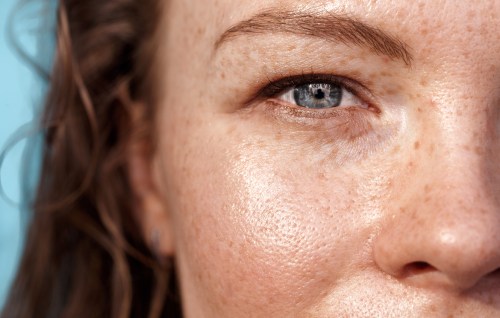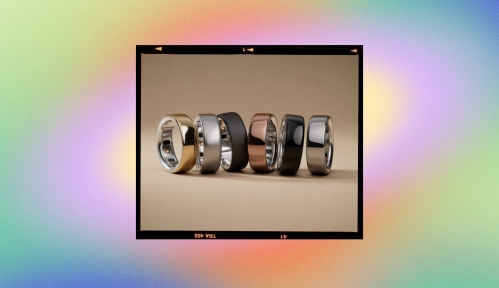One of the most requested procedures at the dermatologist’s office just got a thumbs up from the Food and Drug Administration or the FDA. On February 8, it was announced that Allergan’s name-brand filler, Juvéderm Volbella XC (which is already widely used for lips), can now be used to address volume loss in the skin under your eyes.
Not all fillers are equal, so here’s what to know about this Volbella XC. It’s comprised of hyaluronic acid (HA), so if it’s injected into the skin and you don’t like the results, it can be dissolved. What’s more, this particular HA filler uses lower amounts of hyaluronic acid molecules and has a low water affinity to plump and smooth skin—without making it appear puffy. A clinical trial conducted by the brand found that the treatment demonstrates “significant improvements in the appearance of undereye hollows and overall appearance.” After three months, 80 percent of participants reported that they were “a little or not at all bothered by how tired…the under-eye area looked,” compared to 15 percent before treatment. It lasts for at least a year.
According to Julie Woodward, MD, an AMI trainer, board-certified oculofacial plastic surgeon, and ophthalmologist, the injectable filler is such an effective fix because it really addresses the underlying causes of undereye hollows. She explains that there are three fat pads under our eyes, and as we get older they enlarge and herniate forward, which creates a shadow over the infraorbital rim (aka your eye sockets). This, combined with thinning skin in the area, can cause the area to look hollow.
This Parisian Skincare Brand Is Launching in the United States for the First Time—Here’s What a Derm Wants You to Know

We’re Calling It: Cleansing Balms Are the Face Wash of the Future—Here Are 3 to Add to Your Cart

This Is the One Product That Scarlett Johansson Always Keeps in Her Purse and on Her Bedside Table

She notes that while topical creams can help with things like hyperpigmentation, fine lines, and dehydration, they don’t do a great job at replacing the underlying structure of the bone, fat, and muscle—which is where filler comes in. The ideal candidate, says Dr. Woodward, is someone who has a modest hollowing, so you can fill the area without having to use a whole lot of product.
It’s worth noting that undereye filler has been done in dermatologists’ offices for years; however, prior to now, it was considered an “off label” treatment. That simply means that the filler manufacturer hadn’t studied the efficacy of the product in the under-eye area. This move signals a big step forward in making the procedure more commonplace.
However, it’s extra important to work with a provider who has been properly trained to administer undereye filler. The good news, though, is that thanks to the treatment’s FDA approval, more practitioners will now be able to receive this type of training. “We have so many injectors who want to learn how to properly inject [undereye filler], but we haven’t been allowed to teach it because the use was not ‘on label,'” says Dr. Woodward. “So this launch is really important because it allows educators like me to be able to speak to this indication and how to do it properly, which opens a huge door.”
For more intel on how to deal with dark circles, check out the video below.
Want even more beauty intel from our editors? Follow our Fineprint Instagram account) for must-know tips and tricks.
Sign Up for Our Daily Newsletter
Get all the latest in wellness, trends, food, fitness, beauty, and more delivered right to your inbox.
Got it, you've been added to our email list.








